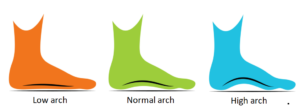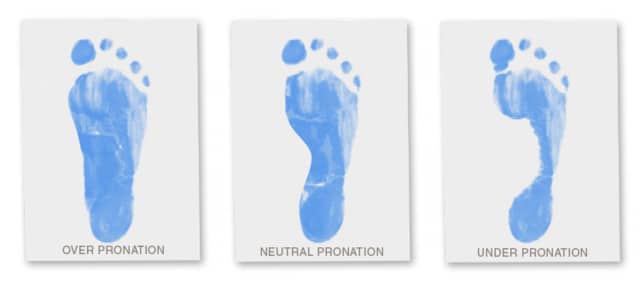So, insoles.
They’re not exactly the most exciting thing to talk about, but if you’re someone who experiences any kind of foot pain, they’re important.
Working in the construction industry, you get used to spending all day on your feet. You pound around on concrete and dirt, lug yourself up and down ladders, navigate your way across scaffolding… by the end of it, your feet have taken quite a beating.
If you’ve got any issues (big or small) with your feet, they’re sure to show up at the end of a long day’s work. When you take hundreds or thousands of steps in the course of a few short hours, you put a lot of stress on your feet, ankles, knees, hips, and back. Any problems with your feet quickly manifest themselves somewhere along the chain.
Buying a good pair of boots is the essential first step. If your boots fit badly, wear out quickly, or are just plain uncomfortable, you’re automatically at a disadvantage.
For the purposes of this article, I’m going to assume that you’ve already got a handle on the boots issue, and you’re ready to focus on getting the extra benefit a great pair of insoles offers.
First off, let’s talk about what you’re looking for.
What is an insole?
I’m not going to insult your intelligence by acting as if you don’t know what an insole is… but just in case we’re not on the same page, here’s a picture.
Simple enough. Somehow, I think you already knew what it looked like!
There’s a number of reasons why you might want an insole. The main ones are for warmth (provides some insulation between your foot and the sole of your boot), to improve the fit (if your shoe is too big), or to support your feet (the most important one for us).
Why should I care about insoles?
As we saw above, there’s lots of different uses for insoles. However, the use we’re most interested in is supporting our feet, protecting them against the stress of a hard day’s work.
I don’t know about you, but I’ve definitely had days were my feet were KILLING me. There’s nothing quite as bad as having trouble with your feet – sure, they don’t hurt so much if you can give them a nice long rest, but this isn’t really an option for most people.
Sometimes the pain gets so bad that it can last for a few days in a row. This is horrible – you end up starting off your day with leftover pain from the day before, the ache getting worse as the day goes on.
Luckily, there’s an easy way we can avoid this. All you have to do is wear supportive insoles. It’s as simple as that!
However, what makes an insole “supportive” is going to depend on your particular needs, so let’s talk about what you need to know.
What kind of insoles for construction boots do I need?
To find out what kind of insoles will support you the most, you first need to figure out what kind of foot you have.
Understand what I mean? If not, check out the following picture. .

As you can see, we can broadly classify feet into three categories. Some people have high arches, some have low arches (flat feet), and some people are just average.
Of course, this kind of thing isn’t that easy to figure out just by looking at it. Fortunately, people in the running world have a little protocol they use to determine what kind of foot they have. This is called the “Wet Test”.
You can check out the link above, but basically, the wet test requires that you wet the bottom of your foot, step that wet foot firmly onto a sheet of heavy paper, and then note what shape you see. It should look something like the picture below (minus the blue coloring – we’re not dipping ourselves in paint here).
The words here are different to the ones pictured above, but the meaning is the same. Some people have high arches, some people have low arches, and some people are in between.
Now that we’ve got that little anatomy lesson out of the way…
Why does this matter?
The height of your arches matters because it affects how your weight is distributed on your foot.
If you’ve got high arches, then your weight is only placed on your toes and heels – nothing in between. Depending on how bad your particular case is, you may suffer from a lot of pain in your heel, and across your foot in general.
If you’ve got low arches, then your weight is being distributed in a weird way on your feet. Over time, this can lead to common problems, such as heel pain, arch pain, and plantar fasciitis.
You need to know what kind of foot you have so that you can figure out what kind of support you need.
- If you have high arches, then you need insoles that support your arches.
- If you walk flat-footed, you probably drop most of your weight onto your heels, so you need insoles with heel support.
- If you have regular arches, then you can use any old insole – lucky you!
Trust me, this may seem unnecessary, but taking the time to figure out what kind of support you need is time well spent.
And to illustrate that point, let me tell you a story…
A few years back, I was having real trouble at work.
I found that my feet and lower back were hurting every time I worked for longer than 3 hours at a time. I never really knew what the issue was – I was using a cheap pair of Walmart insoles, so I figured that was good enough.
But at the same time, I needed to solve my problem. I couldn’t really take a break every few hours. I always prided myself on my ability to work hard, so this problem was embarrassing. I saw that most of the other guys were able to keep going all day. I wasn’t about to let them show me up!
A quick visit to my doctor set me straight. I found that my pain disappeared rapidly when I purchased a good set of insoles (discussed below). This enabled me to work for much longer, with no fear of the pain returning.
I was surprised when my lower back pain disappeared too, but I later learned that any imbalance in the feet inevitably causes pain in other parts of the body.
When you’re off-balance down below, stuff up above moves into weird positions to compensate.
I hope this story shows you how valuable a good pair of insoles can be.
Now that we’ve got our basics covered…
It’s time to take a look at the top 5 insoles for construction boots. I’ll be walking you through the most important features of each, what’s good, what’s bad, and what’s worth spending your money on.
1. Timberland PRO Unisex Anti-Fatigue Technology Replacement Insole

This first name on the list will be familiar to you if you’ve read my article on buying the best construction boots for winter.
Timberland are a globally recognized brand in footwear industry, so it’s no surprise that they also produce insoles. However, these aren’t just any insoles. As part of Timberland’s Pro range, they’re specifically designed with professional tradespeople in mind.
What I really like about these ones is that they mold themselves to your foot. Unless you’ve got very high arches, these should suit you fine.
As well as that, they also provide support in the exact places you need it – the ball of your foot and your heel being the main areas. Walking around all day in heavy construction boots on hard surfaces can take its toll on your feet, so you need to have something to absorb the shock.
These insoles are extremely durable. I’ve had my pair for 8 months now with zero reduction in support. I’ve also heard plenty of people say the same thing.
Starting at about $20 on Amazon, these aren’t the cheapest insoles on this list… but they’re certainly worth the money.
Personally, I don’t mind shelling out $20 a year for something that has such a positive effect on my comfort, and I don’t think you would mind either.

This next pair of insoles on our list is quite similar to the one before it.
These insoles are designed for bigger guys, weighing 200-300 lbs. With this in mind, it’s obvious that the design for these has to be a little more robust than for average offerings.
Based on the construction of the insole, it’s also fair to say that it’s catered towards people with neutral/low arches. If you have high arches, these probably aren’t the best option for you.
I think that construction workers in particular will benefit from how good these insoles are at absorbing shock, thanks to the padding around the heels.
As we’ve said before, the heel is a real problem area, so these insoles stop the pain before it even occurs.
Starting at ~$18, they’re pretty much the same price as the Timberlands. However, these may be a better buy for you if you’re a larger man (over 200lbs), or if you have very flat feet.
3. HappyStep Shoe Insoles

Now, I know what you’re thinking – not exactly the most rugged-sounding item you could think of, is it?
Well, that’s true… but there’s no denying that these are quality insoles.
I’ve included these here in our list for a number of reasons. The first is that they’re made from memory foam, which is something that I consider to be a big plus.
If you don’t know what memory foam is, let me explain. It’s basically a particular material that molds itself to your foot. Over time, certain parts of the insole are compressed, and certain parts aren’t.
It supports you where you need support, that’s all I’m saying. And because it adapts to the shape of your foot, comfort is guaranteed.
Additionally, users have reported that these insoles are great for plantar fasciitis.
If your job is highly active, you may find that these wear out faster than the some of the other options listed here. However, if your job doesn’t require you to spend a lot of time on your feet, then these could be perfect for you.
At $14, they’re the cheapest entry on this list, so if you’re not sure what you need, these might be a good pair to start with.
4. Sof Sole Arch Insole

While all the previous insoles on this list are quality options, this pair is specifically designed for people with high arches.
If you have high arches, you may have a difficult time finding insoles that meet your needs. Thankfully, this product from Sof Sole is the perfect solution to this problem.
A common complaint some people have is that putting in these insoles make their shoes too tight. However, if you’re buying your work boots right, you always leave a little room for insoles.
These insoles may not hold up as long as some of the other pairs on this list, as they’re not strictly designed for construction workers. That said, you shouldn’t really have any issues – plenty of people have worn these for 8-12 hours a day for months on end in other professions without them wearing down.
Prices start at about $15, with some sizes costing significantly more. If you’re someone who has high arches, these are probably better than any other pair on this list. If not, you’re better off looking at the others.
5. Samurai Insoles

Last but not least, we come to the most expensive item on the list (not including some very expensive sizes of the previous pair). At $42.99, you’re probably thinking “these had better be the best damn insoles I’ve ever seen!”.
And you know what? They might be.
With an average Amazon rating of 4.3/5 (based on over 1000 reviews), it’s pretty clear that this product is high-quality. But is it good enough to warrant paying so much for it?
Once again, this insole is offered as a solution for flat/neutral feet. It’s a common problem, one which is a big deal for a lot of people.
The major attraction of these insoles is their medical-grade construction, and their substantial track record of success. To be fair, they must be doing something right to have so many happy customers!
If you have very flat feet, then this product is the answer to all your prayers.
However, for the vast majority of people, these insoles are a bit too expensive to justify over some of the cheaper pairs on this list.
Conclusion
All the insoles listed here are solid options. Depending on your personal situation, you may find that certain pairs meet your needs better than others. Take the time to consider your options, but don’t worry about it too much – they’re all good!
However I have just recently tried a pair of insoles from the company Soul Insole and they really helped with my planter fasciitis. I highly recommend reading my full review of this product here.
It’s also important to note that most insoles need to be trimmed down to size before you can use them. This is a simple process (most come with markings to indicate where you should cut).
If possible, the best thing to do is to remove the insoles from your construction boots, and trace around them onto the new insoles. This will ensure that they’re the perfect size for your boots.
If you have any serious issues with your feet, make sure to talk to your doctor about what’s best for you.
Getting the right pair of insoles may seem pretty insignificant, but I can promise you that you won’t regret it. The amount of pain these little things help you to avoid is absolutely amazing. Get a pair today, and start living easier.

